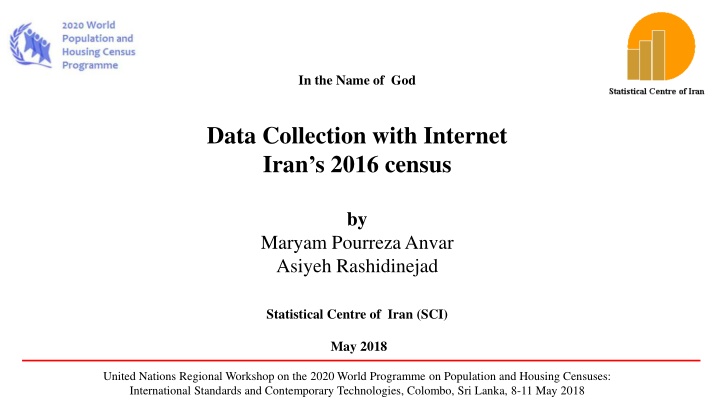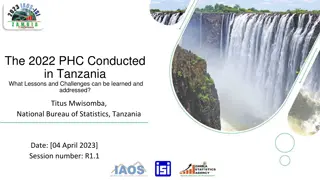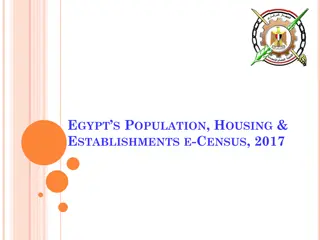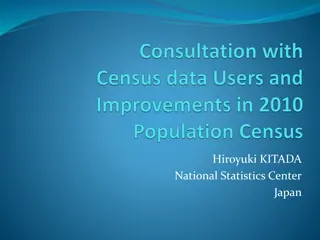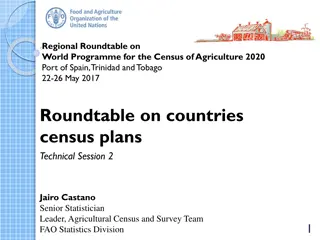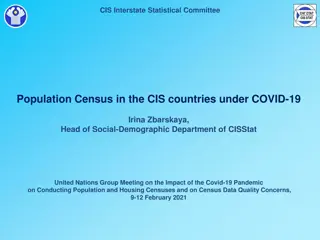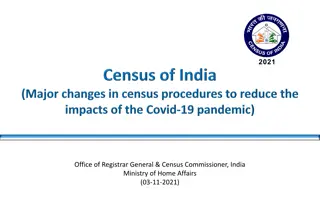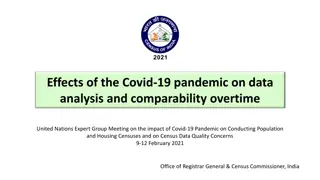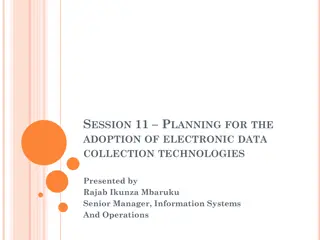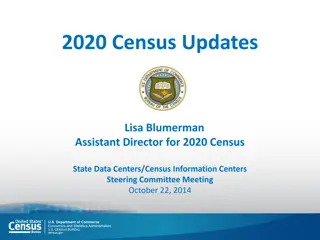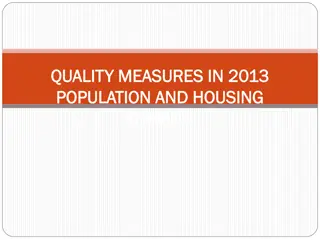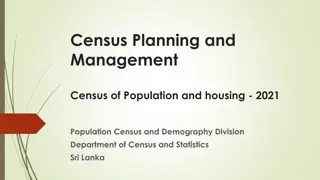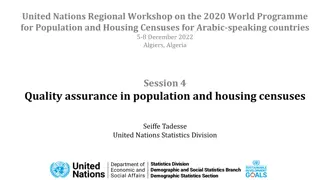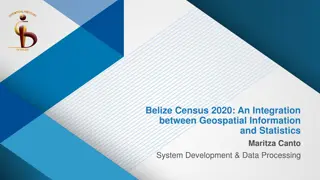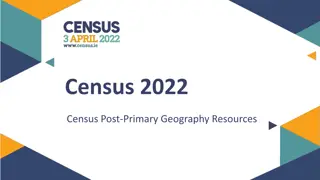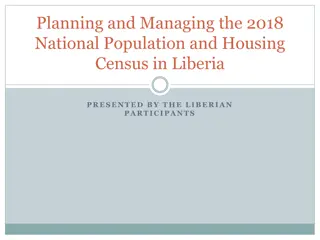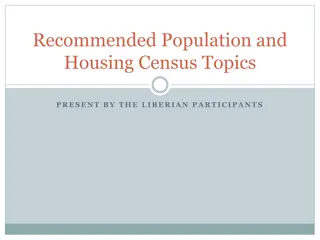Data Collection Methods and Implementation of the 2016 Internet-Based Census
The 2016 census in Iran was conducted using internet-based methods, requiring households to prepare information and familiarize themselves with the questionnaire. The stages of implementation involved convincing households to participate online, completing the questionnaire on the census website, and delivering statistical codes. The process included editing questionnaires when necessary and providing technical support. The questionnaire covered various population information such as names, citizenship, national ID numbers, and residence details.
Download Presentation

Please find below an Image/Link to download the presentation.
The content on the website is provided AS IS for your information and personal use only. It may not be sold, licensed, or shared on other websites without obtaining consent from the author.If you encounter any issues during the download, it is possible that the publisher has removed the file from their server.
You are allowed to download the files provided on this website for personal or commercial use, subject to the condition that they are used lawfully. All files are the property of their respective owners.
The content on the website is provided AS IS for your information and personal use only. It may not be sold, licensed, or shared on other websites without obtaining consent from the author.
E N D
Presentation Transcript
In the Name of God Data Collection with Internet Iran s 2016 census by Maryam Pourreza Anvar Asiyeh Rashidinejad Statistical Centre of Iran (SCI) May 2018 United Nations Regional Workshop on the 2020 World Programme on Population and Housing Censuses: International Standards and Contemporary Technologies, Colombo, Sri Lanka, 8-11 May 2018
Learning and Preparation of Households Before starting the census, households should be familiar with how to complete the questionnaire in the census system, based on the following methods: TV programs Radio programs SCI web site Households had to prepare location and identity information (such as Postal Code, National Number, Mobile Number) Households should be inform with the concepts and definitions used in the census
Stages of the Implementation of the Internet-based Census in 2016, E_ Census In case of missing statistical code, it can be delivered again in determined time Convincing households to implement census through internet Arriving at census website, inserting national code, security code and mobile number Controlling logical relationships of the questions and warning when necessary Sending statistical code and thank you SMS to the mobile number Access to technical support through a call center Access to questionnaire for completing it Reception of statistical code When necessary, the questionnaire can be edited in determined deadline Delivery of statistical code to the enumerator when he/she refers to households 3
First Page of the Internet-Based Census Portal and Instructions for Filling out E- Questionnaire 4
E- Questionnaire 6 * * * * * * * 10 / / * * * 10 * * * ) ( 10 * * * : * * ) ( * 1390 365 * * 365 * * 365 * * * * * 5 *
Contents of the Questionnaire (Population Information) Name and family name of the head of the household/-Name of institute Citizenship National ID Number Foreign Nationals ID code Relationship to the head of the household Date of birth - Type of calendar Month and year of birth -Estimated age Residence status Religion Health insurance card /Type Has he/she changed his/ her place of residence (city or village)since 22 October 2011? Duration of residence in this city or village 6
Contents of the Questionnaire (Population Information) Place of previous residence Previous province Previous sub-province -Previous city Country of previous residence Is he/she currently attending school? Literacy status Educational attainment/degree Activity status Marital status Has she had any children born alive? Total number of children born alive - Total number of children born alive(still living) Has she had any live birth during the last 365 days? Total number of children born alive during the last 365 days Number of children born alive during the last 365 days (still living.) 7
Contents of the Questionnaire (Housing Information) Type of household residence place Type ownership of the residential unit Floor area (Square meter) Type of residential unit skeleton Material used in construction of residential unit 8
Statistical Code (Tracking Code) Completion o f the Census . 773096245888 : Your information was successfully recorded: Statistical code: 773096245888 : Registering town and village of residence Controlling the accuracy of data The minimum number of digits Coding Impossibility to produce or guess 9
General Processes of the Second Stage Taking the working unit Allocation of working unit Servers Sending collected data by internet Collecting data by enumerators Uploading working unit to the tablet nd stage Data Storage 2 Ready to integrate with the data of the 1st stage 10
Second Stage: Face to Face Interview Enumerator's Face to Face Interview by Using Tablet from 22 October to 30 November 2016 11
Map Display and Correction Tools in the SIJAD Map Module Statistical Blocks Edition Tools: Creating blocks Delete blocks Integrating blocks Disintegrating blocks Functional Tools: Search of blocks Selection of blocks Map guide 12
Telephone-based Census Telephone-based Census Portal Absent Households User name * Password * Rewrite security code 640 Operators Enter 91.000 households 270.000 persons 13
Phases of Census Phase 2: Face to Face Interview Phase 1: Internet Census Visiting 30,000,000 Places Number of Participated Households in Internet Census: 11,700,000 Taking internet code: 11,400,000 Codes Sticking 553,000 Absent Household Notice Card Face to Face interview:12,439,000 Households or or Average Registration Internet census: 270,000 Households Phone Census: 91000 Households Time: 17 Minutes or 192,000 Households Rest absent from 24 September to 21 October for all households and from 22 October to 20 November for absent households By enumerator: By household: 14
Participation Rate on Internet Census I.R. Iran: 48.4% Target: 35% 15
